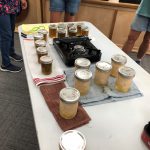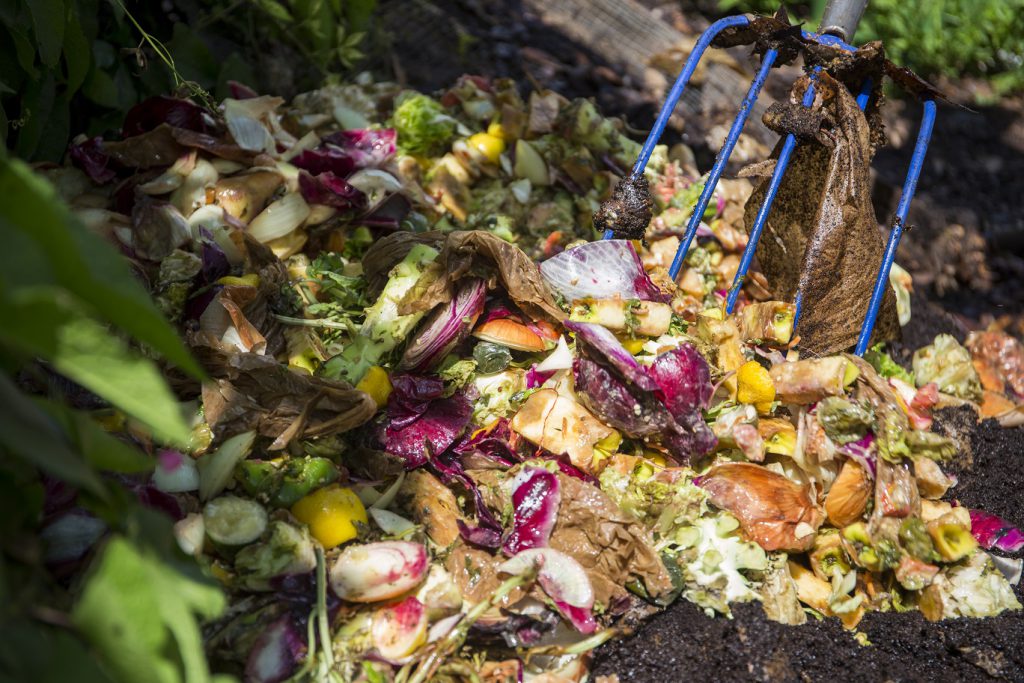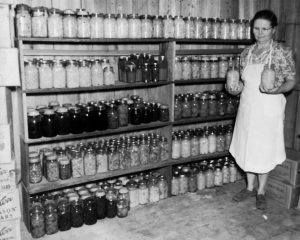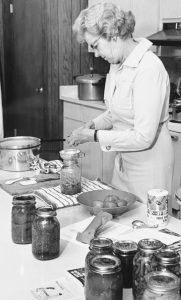
by Claire Davis | Oct 26, 2021

Photo Source: Auburn University IHSA Equestrian Team
Claire Reach is the UF/IFAS 4-H & Family and Consumer Sciences (FCS) Agent in Calhoun County, Florida. For 4-H, she specializes in animal handling, animal safety, and animal sciences. For FCS, she mainly specializes in food safety and healthy living, but has found a new opportunity to work with First Time Homebuyers and the State Housing Initiative Partnership Program (SHIP) in the county.
Claire grew up in Alabama, splitting her time between Birmingham and her family’s farm, L & L Angus Farm, in Auburn. The family farm is Claire’s driving force behind the passion that she has for agriculture, which is a large part of the work she is doing in Extension.

These pictures are of my family on the farm in Auburn, AL. Photo Source: Dave Davis.

Peep some of the cows in the background. Photo Source: Elise Reach.
With a family background in Ag, she decided to study Animal Science-Production Management at Auburn University in Auburn, Alabama. While completing her undergraduate degree, Claire competed for Auburn University’s Intercollegiate Horse Show Association, worked at Auburn University’s College of Veterinary Medicine in a research barn, and continued to work on the family farm. She graduated in May of 2019 with her Bachelor of Science and a minor in Agricultural Business.

Several home cooking/canning classes offered in 2021. Strawberry jam, chicken, pepper jelly, salsa, and mozzarella cheese have been made! Photo Source: Claire Reach UF/IFAS.

The Calhoun County 4-H Horse Club recently started up! (The 2 horses on the right side of the image also belong to me.) Photo Source: Dave Davis.
Shortly after graduation, she moved to Florida to work for Deseret Cattle and Timber as a Heavy Machinery Operator, but soon realized that her passion was Extension. The position in Calhoun County became available and she jumped at the opportunity to apply for it. Having just started in May 2021, Claire has not been with UF/IFAS Extension long, but she cannot wait to see what the future holds for her county. Claire says that she aspires for the Calhoun County FCS Program to be the area’s leading program for adults in practical home practices, whether that be home canning or healthy eating, and healthy living. All the programs that she offers, whether it be 4-H or FCS, follow the same motto: ‘learn by doing’. This drives the experience of each program, allowing participants to fully understand a concept or ask questions when they do not.

These are the “goodest” dogs of all time! Evie (Chocolate Lab), Diesel (Black and White Mutt), and Hank (Bassett Hound-laying down) Peep the chickens, turkeys, cat, and horses in the back ground! Photo Source: Claire Reach UF/IFAS.

This is Chick! For a mare, she’s pretty special. We have a great bond and she trusts me to do just about anything with her (i.e. shoot a gun off of, rope cattle, stand on, lay on, or let little kids ride) Photo Source: Tanner Mayo.
When Claire is not at work, she says there is always more work to be done at home. Living on a functioning livestock operation, she has several animals, including: chickens (about 50 at the moment), 5 guineas, 4 turkeys, 2 cats, 4 dogs, and 3 horses. She hopes to be able to add cattle to the ever-growing “funny farm” soon! It isn’t always about work, though. In her spare time, Claire enjoys spending time with family, riding her horses, long walks with the dogs, dirt road riding, and paddle boarding at the beach!

by Samantha Kennedy | Mar 17, 2021
Food waste is a huge problem here in the United States. Here are a few incredible facts: Food is the most common solid source of waste in American landfills. Anywhere from 25-40% of food grown, processed, and transported in the US will never be eaten. Food waste harms the environment and results in a lot of wasted money.
Looking for ways to reduce food waste? Just follow these six tips.
Plan meals carefully. Only purchase what will be eaten in a reasonable amount of time, especially perishable items. Buying large quantities of fresh produce, dairy, and other perishables may seem like a time-saving practice. However, throwing spoiled food away not only wastes money, but also time, since the spoiled items need to be replaced during another trip to the market.

Instead of throwing old fruits and vegetables away, turn them into nutrient-rich compost to help your garden thrive. (Photo source: Camila Guillen, UF/IFAS)
Freeze or re-use food whenever possible. Not all food freezes well. However, fresh fruits and vegetables freeze quickly and easily when handled properly and can last in the freezer for months. Vegetable scraps are also great for making compost, which enriches the soil and can help support the growth of backyard gardens.
Look at the sell by/use by/best by dates on food products. Try to purchase items with the longest shelf-life (the latest date) available. If a product is close to its sell by date, be sure to use it or freeze it quickly. Keep in mind, however, that just because a product is past its use by date does not mean it is unsafe to eat. Take it on a case-by-case basis. If there is no mold, pests, off odors, off colors, or off textures, the product is safe to consume. This is especially true for dry, non-perishable items.
Store food properly. Storing foods at the wrong temperatures can speed up the spoilage process. Keep the refrigerator between 37 and 39 degrees Fahrenheit. Dry goods storage should ideally be around 50 degrees F, but since this is not realistic for most of us, just make sure dry goods are stored in a cool, dry place outside of direct sunlight.
Stay organized. Arrange items so that the oldest stuff is in front. This helps ensure it is used first. Always label frozen foods with the item name and date it was first frozen and use within 12 months whenever possible. Foods frozen for longer than a year start to diminish in flavor and texture. Old food also tends to attract pests, so making sure things are used efficiently can help eliminate the risk of insects and rodents.
Donate non-perishables to those in need. Food banks and other community organizations are always looking for food donations to help the hungry. Non-perishable foods that have not surpassed their use by/sell by dates are always welcome donations. Instead of trashing it, share it with someone less fortunate.
In most cases, food affected by flood damage or other disasters should be discarded for safety reasons. Better to be safe than sorry. However, everyday food waste is completely avoidable if a few simple rules are followed. The amount of food thrown away each year in the US is disheartening. When shopping, being a little more mindful of quantities and dates can help reduce overall food waste, saving both money and the environment.
Additional Resources:
National Center for Home Food Preservation (University of Georgia Extension)
Food Waste Resources (Kansas State University Extension)
UF/IFAS is an Equal Opportunity Institution.

by Terri Keith | Feb 21, 2021

Homemade canned preserves 1942.
Photo Credits: UF/IFAS File Photo
In 1795, Napoleon needed a better way to preserve large quantities of food for his troops during the Napoleonic Wars, so his government offered a reward of 12,000 francs for the invention of a new food preservation method. In 1809, Nicolas Appert won that award with his canning technique that used glass containers that were sealed then heated to a set temperature. Peter Durand created the tin canister a year later. These inventions led to the canning materials and processes that are used today to preserve food for people all over the world.
Canned food provides a convenient and often less expensive way to include fruits and vegetables in the diet of many individuals and families. Canned foods are also considered a staple in many pantries because of their shelf life. Commercially canned products may keep the food packed inside at its best quality for 1 to 5 years depending on the type of food. Most home canned foods are able to be stored for up to a year, though there are some exceptions.

Photo Credit: UF/IFAS Photo by Tyler Jones
To make the most of canned foods, keep these tips in mind.
Best by or use by dates on commercial products do not indicate safety. They are estimated dates provided by the manufacturer on how long they believe their product would be at its best quality. The exception to this is for infant formula products that are required to have a “Use-By” date and should not be used after that date.
Avoid cans or jars that are not in good condition. Look for dents, swelling or bulging, leaking, rust, cracks in jars or loose lids. If the food has a foul odor or spurts liquid when it’s opened, do not use it. Any of these could indicate the food may have been contaminated or could contain Clostridium botulinum toxins.

A woman canning in the kitchen.
Photo Credits: UF/IFAS File Photo
Store canned foods in a cool, dark and dry space. This will help them to last longer and keep the food inside at its best quality. Keep canned foods in an area that is between 50-70°F.
Use canned foods to fill nutrition gaps. Add a can of vegetables to your dinner menu—a side of green beans or carrots can help balance your plate. Try using a can of fruit as a basis for a dessert. Pineapple and cottage cheese, anyone? If you’re concerned about sodium or sugar in canned foods, look for products marked as low sodium or lite for less sugar. Compare ingredient and nutrition labels of different brands or varieties of a product to find what works best for you.
If you can foods at home, make sure you’re following recipes that have been tested for safety. Follow the guidelines in the USDA Complete Guide to Home Canning, 2015 Revision or find more information at the National Center for Home Food Preservation. You can also contact your local extension office; in Florida, you can find your local office here.
Resources:
U.S. Department of Agriculture, National Agricultural Library, How Did We Can?: https://www.nal.usda.gov/exhibits/ipd/canning/timeline-table
U.S. Department of Agriculture, AskUSDA, How long can you keep canned goods?: https://ask.usda.gov/s/article/How-long-can-you-keep-canned-goods
U.S. Department of Agriculture, Food Safety and Inspection Service, Food Product Dating: https://www.fsis.usda.gov/wps/portal/fsis/topics/food-safety-education/get-answers/food-safety-fact-sheets/food-labeling/food-product-dating/food-product-dating

by Terri Keith | Aug 4, 2020

Credit: Photo by JÉSHOOTS from Canva Free Images
Watermelon is a tasty treat so celebrating watermelons in August sounds like a great reason to break out all the delicious and healthy watermelon recipes I’ve been saving—like this one for Watermelon Limeade.
Did you know that eating watermelon provides your body with Vitamins A, B6, C and potassium? Red watermelons are also a good source of lycopene. A two-cup serving of watermelon only has 80 calories but can provide 6% of your daily value of potassium, 8% of Vitamin A, 25% of Vitamin C and more!
Watermelons are also completely edible, from the fleshy center part all the way out to the green rind. The rind is typically cooked or pickled before being eaten and Watermelon Rind Pickles are popular here in the Southeast. Ninety percent of watermelons sold in stores are seedless, but if you do get a seeded watermelon, the seeds can be cooked and eaten too! They are usually sprouted and roasted or dried first.

Photo Credit: UF/IFAS File Photo
Buying a whole watermelon versus one that’s pre-cut can be a better value, but you’ll want to make sure you select a ripe melon. There’s an old wives’ tale about thumping the watermelon but the best way to choose is by picking it up and looking at it. Here’s what you’re checking for:
- Look for a watermelon that doesn’t have any bruises, cuts, or dents. Some scratches are normal.
- Check for a buttery or creamy yellow spot. This is an indicator of where the watermelon rested on the ground while it ripened.
- The watermelon should be heavy considering the size. It is 92% water!
When you are preparing your watermelon, make sure to wash it before cutting into it. Use cool running water, scrub it with a produce brush, then dry it with a clean paper towel or cloth towel. Many people skip this step since it’s heavy and can be bulky but it’s an important part of maintaining your food’s safety. If you don’t wash your watermelon before cutting into it, you could be transferring bacteria from the outside of the melon to the inner flesh. Be sure your hands and any knives, utensils and cutting boards you will be using are clean as well.
An uncut watermelon can be stored outside of the refrigerator for a week if it wasn’t previously chilled. Once it has been cut open, it will need to be stored in an airtight container and refrigerated—you’ll want to enjoy it within a week.
When you think about eating watermelon, I bet the first image that comes to mind is eating a plain slice right from the fruit. And that’s great! Just keep in mind that watermelon can be made into drinks, added to salads, frozen into popsicles, incorporated in a stir-fry or slaw or even grilled!
Now, back to those recipes… here’s one for Watermelon Rind Pickles if you want to enjoy them right away (these will only keep for 2 weeks in the refrigerator) and this is one for canning Watermelon Rind Pickles so you have them year-round! And if you want more, try the recipe section at the Produce for Better Health Foundation or the National Watermelon Promotion Board. Celebrate watermelons this August by trying a new recipe or two with this amazing fruit!
Resources:
National Watermelon Promotion Board. Frequently Asked Questions: https://www.watermelon.org/watermelon-101/facts-faqs/
National Watermelon Promotion Board, Nutrition: https://www.watermelon.org/nutrition/nutrient-profile/
Produce for Better Health Foundation, Top 10 Ways to Enjoy Watermelon: https://fruitsandveggies.org/stories/top-10-ways-enjoy-watermelon/

by Dorothy C. Lee | Mar 26, 2020

Strawberries from Fresh off the Farm event. Taken 04-12-2019 (Photo Source: UF/IFAS Camila Guillen)
Choose locally- grown strawberries during the harvesting season; they will be the freshest and the most flavorful. When picking strawberries, try to pick early in the morning or later in the day when the fruit is cool. Strawberries are best used within 2-3 days of picking.
Uses & Preparation
Freezing Whole Strawberries; Spread a single layer of prepared fruit on shallow trays and freeze. When frozen, promptly package (to avoid freezer burn) and return to freezer. The fruit pieces remain loose and can be used as needed.
Freezing Sliced or Crushed Strawberries; Prepare berries: Using ripe berries, wash gently and remove caps. Slice or crush partially or completely. To 1 quart berries add 3/4 cup sugar. Mix thoroughly. Stir until most of the sugar is dissolved or let stand 15 minutes. Pack into containers, leaving 1/2″ headspace. Seal and freeze.
Storage
Sort and remove any bruised or damaged berries as soon as possible and use in sauces, purees or jams. Place the berries in cool, well-ventilated containers. The moisture content of fresh strawberries is high, so store them unwashed and uncovered, or loosely covered.
Quantities
1 pint = about 3 1/4 cups whole berries (12-36 depending on size of berries) or about 2 1/4 cups sliced berries. 1 cup sliced fresh berries = One 10-oz. pkg frozen, sweetened berries.
MERRY FRESH STRAWBERRY PIE
1 9- inch pie crust, baked
1 cup white sugar
3 tablespoons strawberry flavored gelatin mix
2 tablespoons cornstarch
¼ teaspoon salt
1cup boiling water
2 pints strawberries, cleaned and stemmed
2 cups whipped topping (optional)
Combine sugar, gelatin, cornstarch, and salt in a medium saucepan. Stir in boiling water. Boil mixture for 3 minutes over high heat, stirring constantly. Cool completely.
Arrange whole strawberries in pastry shell. Pour gelatin mixture over berries. Chill before serving. Top with whipped topping, if desired.
Nutrition Information: Low in calories – High in Vitamin C – Good source of folate, potassium & fiber
Available Fresh: April – May
To learn about fresh Florida strawberries, please read our fact sheet: Panhandle Produce Pointers – Strawberries.
.For more delicious produce preparation tips, please visit: http://www.panhandleproducepointers.com.

by Stephanie Herzog | Aug 24, 2019
September is National Preparedness Month, so right now is a great time to think about how you can be prepared, and then act on those thoughts and get ready for an emergency! This article will help get you thinking, give you some great starting points, and provide resources to turn to.
Emergencies Have a Wide Horizon
While hurricanes are likely the first thing panhandle residents think of when it comes to emergencies, are you prepared for others? Fires? Floods? Hail? Lightning? Tsunamis? Drought? Heat waves? Tornadoes? Possible winter storms? Marine oil spills? Major sewage problems? Other life-threatening medical disasters? Being prepared for a hurricane like Michael is vital to panhandle life, but it’s certainly wise to consider other possible disasters and to be prepared for anything.

Being prepared for an emergency can greatly reduce the stress it causes. (Photo source: Stephanie Herzog)
There are also so many ways to prepare for emergencies that it can be overwhelming to think about. Do you have sufficient food storage? What about clean water for your whole family (pets included)? How are you going to wash your clothes? How do you purify water? What if your toilet isn’t usable, what do you do? Can you safely start a fire if there’s no heat? What about shelter? How do you stop a gaping wound? How do you turn off the water to your house? What is the best evacuation route? How do you contact someone when there’s no power? Are those potentially life-saving prescriptions easily accessible? Where is the deed to your house, the title to your car, and your family’s vital identification documents? You’re filing an insurance claim, and you have no idea what brand your Smart TV was, where you bought it, how old it was, or how much it cost – what do you do?
Preparation Brings Relief
Have all of these questions got you thinking, but perhaps exhausted you? Now imagine that you could answer every one of these questions confidently – how do you feel? A weight lifted? Stress is a central source of fatigue for us all, and with it comes a variety of problems – mental, physical, financial, and social. Think of a time when you were prepared for the expected or unexpected – was your stress considerably less? Most likely it was. Preparation is a positive, proactive behavior that gives foresight into the unknown. Procrastination tends to be the default within a human’s nature, so being prepared doesn’t necessarily sound like a fun thing to do with your time. But it will be a game-changer for your life when the time comes that you have to react swiftly and decisively in the event of an emergency. The investment is well worth it!
However, you don’t have to do it alone. Thankfully, there are many professionals here to help you! Here are a few starter tips to aid you in the beginning of your preparation:
- Human Life. First and foremost, in an emergency the highest priority is that of preserving human life. Material objects can be replaced – a life cannot be. Always keep this in mind while preparing for and responding to emergencies!
- Sustenance Storage. Have adequate food and water storage for your needs. Label your food and water storage with the month and year to help track expiration dates.
- Canned and dehydrated foods are great for storage, and many items have a long shelf life.
- Remember one gallon of water per person/pet per day – store as much fresh water as you can! You can only survive a few days without water, but weeks without food.
- Plan in your near future to eat and drink the food and water supply that are nearing expiration and then replace the storage with fresh sustenance.
- 72-Hour Kit. Have a 72-hour kit for each member of your family, including pets. Backpacks or duffel bags are ideal grab-and-go containers. Keep a 72-hour kit both in your home and in your car.
- Review Annually. Pick one Saturday a year as your “emergency preparedness day” where you review all of your food and water storage, medical supplies and prescriptions, fire extinguishers, and all other emergency materials.
- Make an inventory and then head to the store to replace any expired or missing items.
- Clean and organize your storage space and emergency kits so everything is accessible.
- Evacuation Plan. Have an evacuation plan and put it on the calendar to practice it with your family – and even neighbors – every three months.
Start now to be prepared!
Additional Resources
Sources
Jaffe, E. (2013, March.) Why wait? The science behind procrastination. Association for Psychological Science. https://www.psychologicalscience.org/observer/why-wait-the-science-behind-procrastination
Steel, P. (2007). The nature of procrastination: A meta-analytic and theoretical review of quintessential self-regulatory failure. Psychological Bulletin, 133(1), 65-94. http://dx.doi.org/10.1037/0033-2909.133.1.65





















